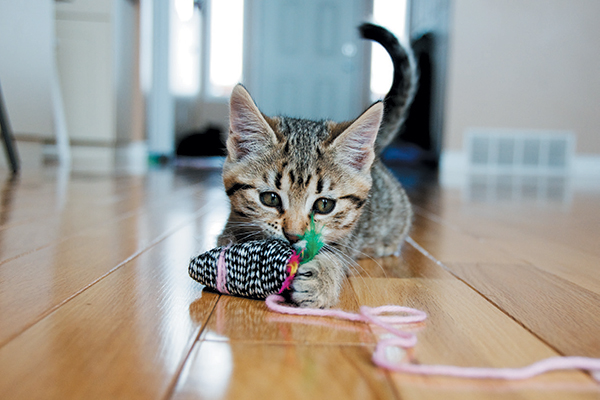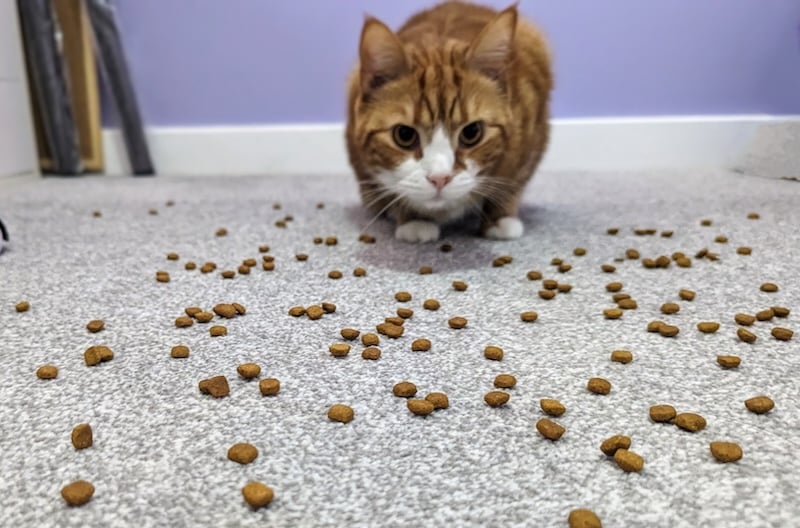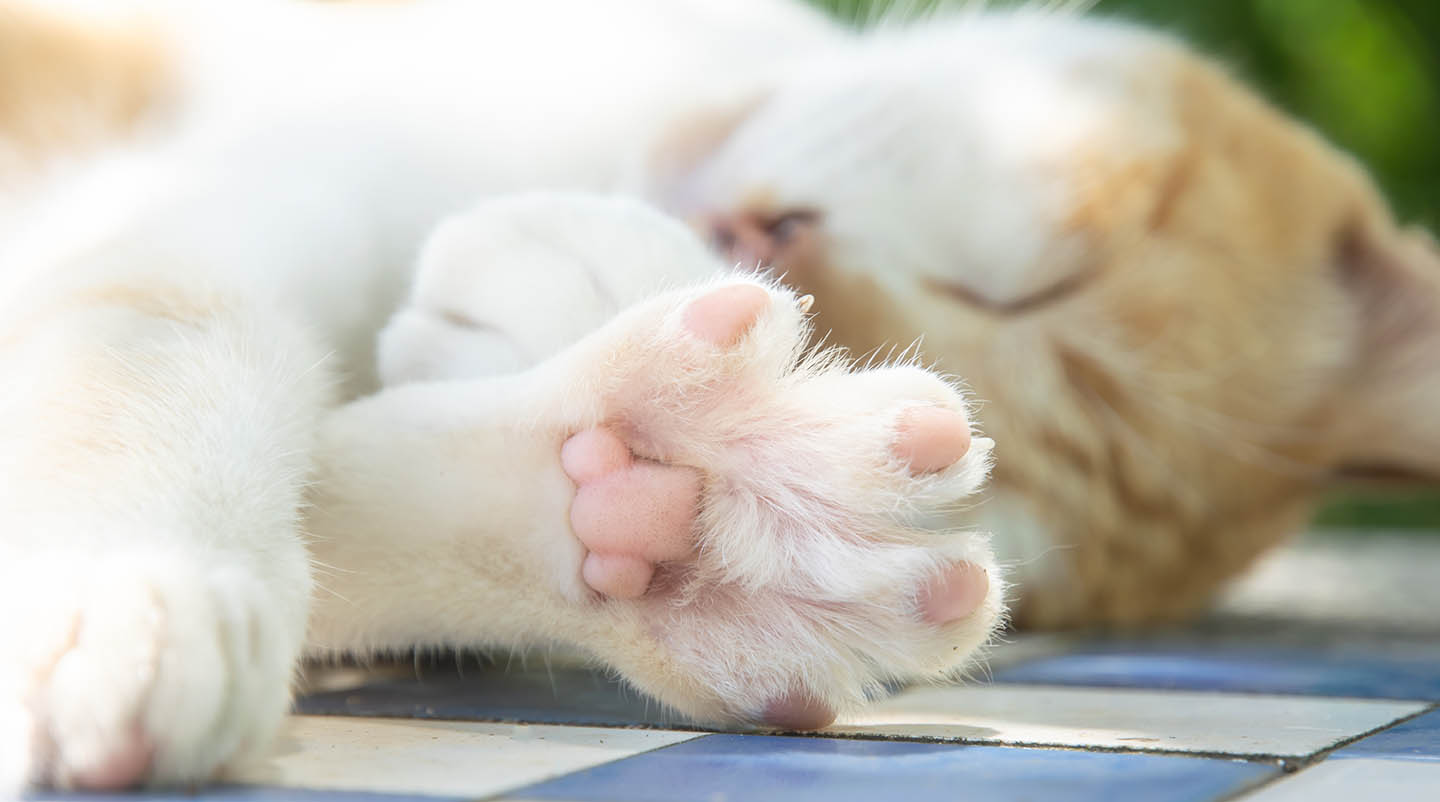Kittens make us smile and laugh. They make us say, “Awww!” But these babies have distinct needs and attributes. If you thought you knew kittens, you may have to think again! We’ll guide you through 22 amazing kitten facts to help you give them their best life.
The 22 Kitten Facts
1. Kittens are fragile.
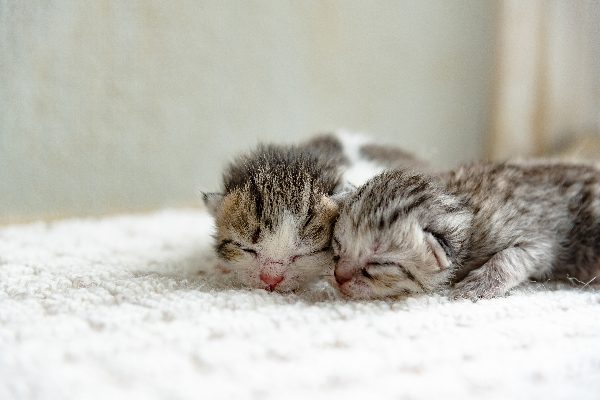
Newborn kittens are completely helpless and totally dependent on their mothers for nourishment, warmth and elimination. If they’re orphaned, they need 24/7 care from a kind human.
They need to stay warm and eat every couple of hours around the clock. They even need help pottying. From birth to about 5 weeks old, kittens rely on their mothers to stimulate their anogenital region so they can urinate and defecate.
A foster parent can help with that by taking a warm, wet cotton ball and gently rubbing the kittens’ anogenital region. Without this help, they could die.
2. They’re impressionable.
During kittens’ first 12 weeks, they learn who’s safe and trustworthy, what’s good to eat and where the bathroom is. To become socialized and friendly toward people, this is the time for loving human hands to hold them, pet them, feed them and, once they start playing, have fun with them.
3. It’s important for kittens to spend time with other cats.
For about the first 12 weeks, kittens become socialized toward other cats. They learn appropriate respect toward adult cats from their mothers and how to get along with their peers from their littermates. They learn things like where they stand in a hierarchy, to respect other cats’ territory and how to fight fair.
4. Kittens are born with blue eyes.
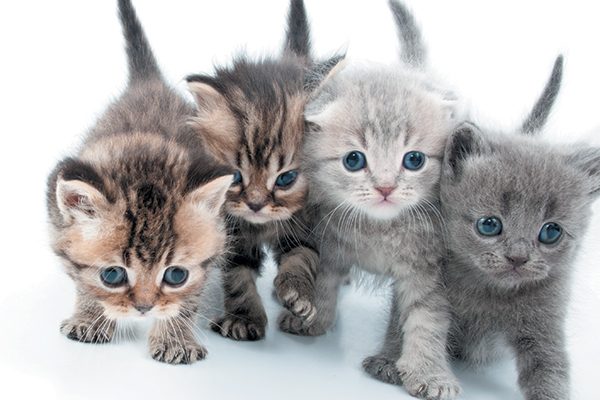
One of the most interesting kitten facts? Their eyes open with a bluish hue at about 2 weeks of age, and some breeds — like Siamese, Tonkinese and Ragdoll — keep their blue eye color. You might see a range of colors during the kitten’s first year before her eyes change into their permanent color.
5. They have a far superior sense of smell to ours.
Cats are equipped with an extra organ involved in their sense of smell. Located at the roof of their mouths, the vomeronasal organ enables cats to heighten the power of their sense of smell.
By 4 weeks of age, this organ is fully developed. Kittens rely on their smelling acuity to find Mom because their sense of sight and hearing are not yet fully developed.
6. Their sense of hearing is one of the best on the planet.
Cats have among the best hearing of all land animals. They are born deaf, but when their amazing sense of hearing is fully developed by 4 weeks of age, they can hear 65,000 cycles per second (or hertz), whereas we can only hear 20,000.
7. They see things differently.

Kittens are born blind and don’t even open their eyes for their first week or two after birth. While their eyesight is undeveloped, they are adept at using their whiskers and sense of smell to get around. Fully developed by 5 weeks of age, their eyesight is different from ours.
As nocturnal hunters, cats distinguish movement and perceive depth better than we can and see in light six times dimmer than we can. Yet they lack the ability to see the full spectrum of colors we see.
8. Feed kittens a growth diet.
Another takeaway from these kitten facts — once the weaning process begins at about 5 weeks of age, kittens can eat wet or dry food. They might need to transition during this time with a mix of kitten formula and solid food.
Cats are obligate carnivores, meaning they get their nutrients from meat. Choose a kitten food that is a growth formula for about the first year.
9. They’re not finicky eaters — yet.
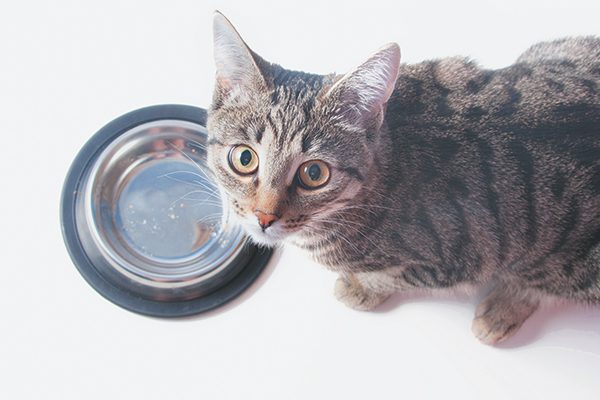
This is the time to give them a variety of kitten food so they don’t become picky eaters. If you ever have to switch their diets for health reasons, you want them to have an adaptable palate.
10. Kittens are actually easy to potty train.
Just plop them into a litter box, and they’re trained. It’s instinctual for cats to bury their waste in sand-like substrate. Many kittens will learn to use the litter box just by watching their mothers use it.
11. Keep the litter box clean.
Scoop the litter box at least once a day. If your kitten isn’t using it, experiment with litters until you find one she likes. Kittens usually prefer something soft and sand-like. If she eats the litter, use an edible formula like corn or wheat.
12. Kittens love to knead.
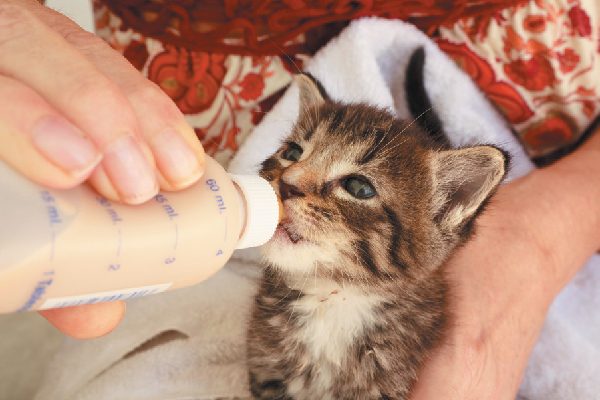
Kittens knead when they nurse to stimulate milk flow, but they still knead into adulthood. When a cat kneads you, she’s seeking comfort and chose you as a mother figure to provide it.
13. Give kittens a smaller litter box.
Provide one with low sides so they can get in and out of it on their own. As they grow, get them a litter box that is one-and-a-half times their length.
14. They’re easy to groom at this age.
Handle their paws and open their mouths to look at their teeth. This will make nail trimming, pilling and toothbrushing when they are adults easier.
15. Fleas are especially dangerous to kittens.
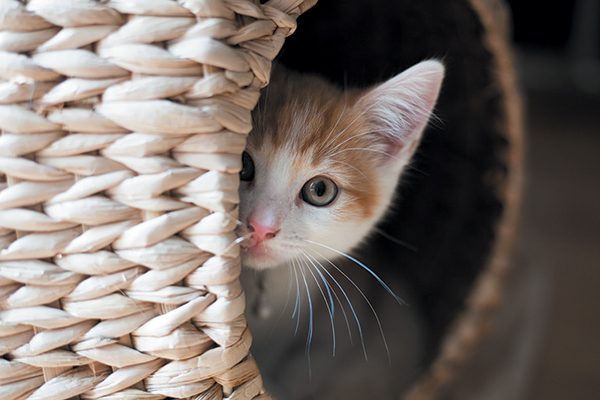
Fleas can cause tapeworm and a host of diseases. In kittens, these parasites can cause anemia, which can be fatal. Improper use of flea-control products is also dangerous and sometimes fatal.
Follow packaging directions on any topical treatments. Use a flea comb, bathe your kitten, and wash bedding. Vacuum around the house to battle an infestation. Involve your veterinarian for guidance.
16. Save them from themselves.
Curious kittens will explore anything they can get into. Look around your house for anything that can cause harm.
17. Teach your kitten appropriate scratching behaviors.
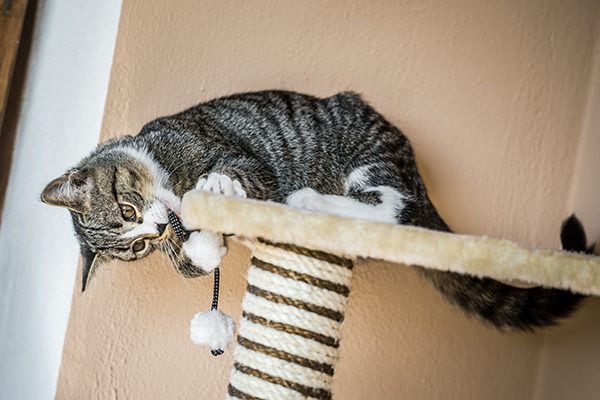
Get them acclimated to proper scratching surfaces like sisal and corrugated cardboard. It feels good and will make them less inclined to scratch your furniture.
18. They need to play politely.
Redirect aggressive play with your hands or feet toward a toy, so they don’t get into the habit of biting and scratching people.
19. Create a safe room for your kitten.
Before bringing kitten home, prepare a safe, enclosed space equipped with food and water dishes, litter box, scratching post and bed. Let her stay in this room before opening up the rest of the house to her. A big, unexplored house can be overwhelming, and she’ll feel more comfortable getting to know a small space first.
20. Keep up with those vet appointments.
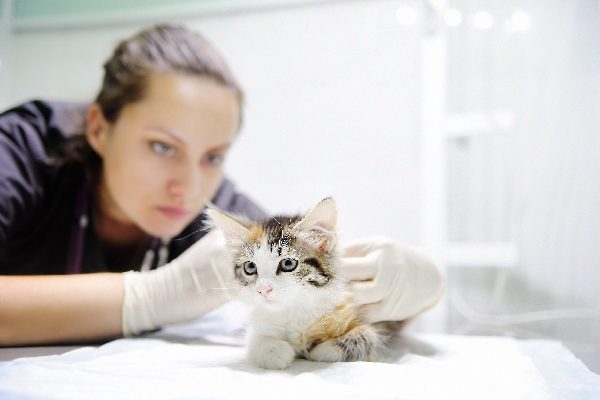
Take your kitten to the vet for vaccinations, deworming and a health check. Talk to your vet about any issues, such as any cold-like symptoms and the best age to spay/neuter. Your kitten’s first wellness check is essential.
21. Kittens can become parents.
Kittens can be spayed as early as 8 weeks, and they can go into heat and become pregnant by 5 months, so don’t procrastinate. Spaying/neutering will prevent unpleasant behaviors associated with a heat cycle, like urine marking and howling.
22. They’re not kittens for long.
Kittens grow through infancy, childhood, adolescence and into young adulthood in the first two years. By the age of 2, their eye color, coat color, pattern and length, and personality will be well-established.
Thumbnail: Photography by ©Wildroze | Getty Images.
Read more kitten facts on Catster.com:
- What to Know About Kitten Behaviors
- Kittens Meowing — How and Why Baby Cats Meow
- Can Kittens Drink Cow’s Milk?
- 1 The 22 Kitten Facts
- 1.1 1. Kittens are fragile.
- 1.2 2. They’re impressionable.
- 1.3 3. It’s important for kittens to spend time with other cats.
- 1.4 4. Kittens are born with blue eyes.
- 1.5 5. They have a far superior sense of smell to ours.
- 1.6 6. Their sense of hearing is one of the best on the planet.
- 1.7 7. They see things differently.
- 1.8 8. Feed kittens a growth diet.
- 1.9 9. They’re not finicky eaters — yet.
- 1.10 10. Kittens are actually easy to potty train.
- 1.11 11. Keep the litter box clean.
- 1.12 12. Kittens love to knead.
- 1.13 13. Give kittens a smaller litter box.
- 1.14 14. They’re easy to groom at this age.
- 1.15 15. Fleas are especially dangerous to kittens.
- 1.16 16. Save them from themselves.
- 1.17 17. Teach your kitten appropriate scratching behaviors.
- 1.18 18. They need to play politely.
- 1.19 19. Create a safe room for your kitten.
- 1.20 20. Keep up with those vet appointments.
- 1.21 21. Kittens can become parents.
- 1.22 22. They’re not kittens for long.

